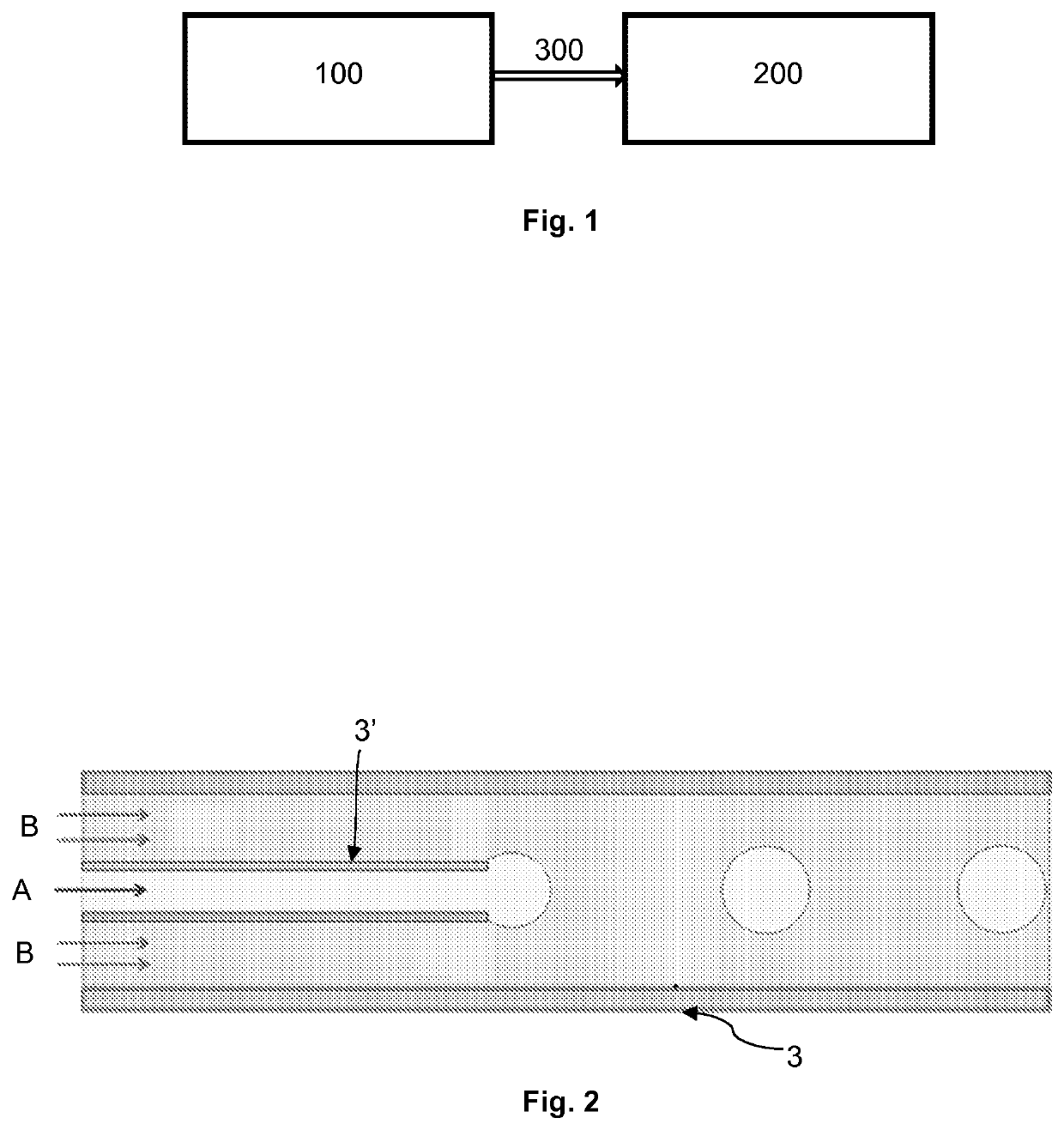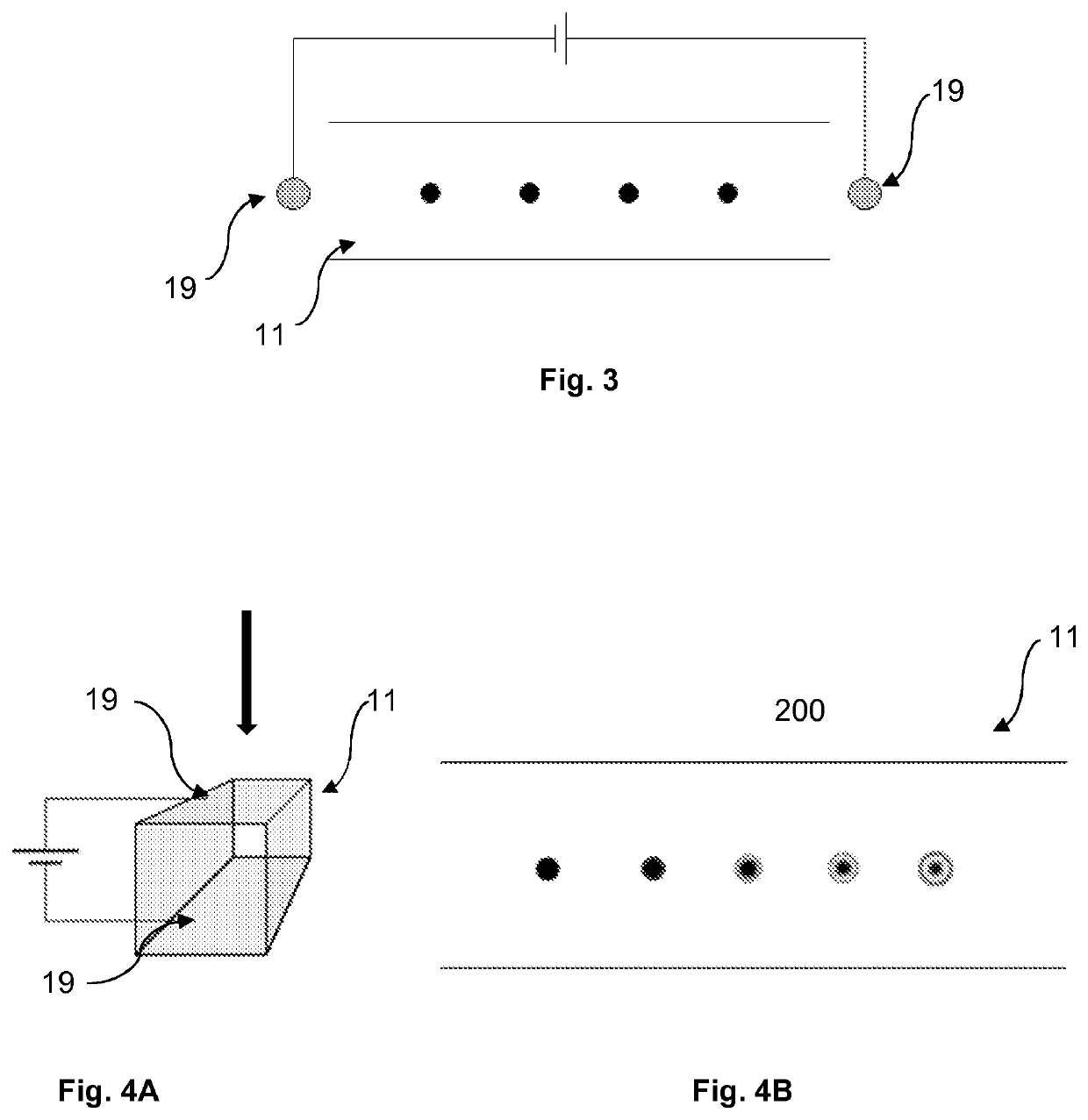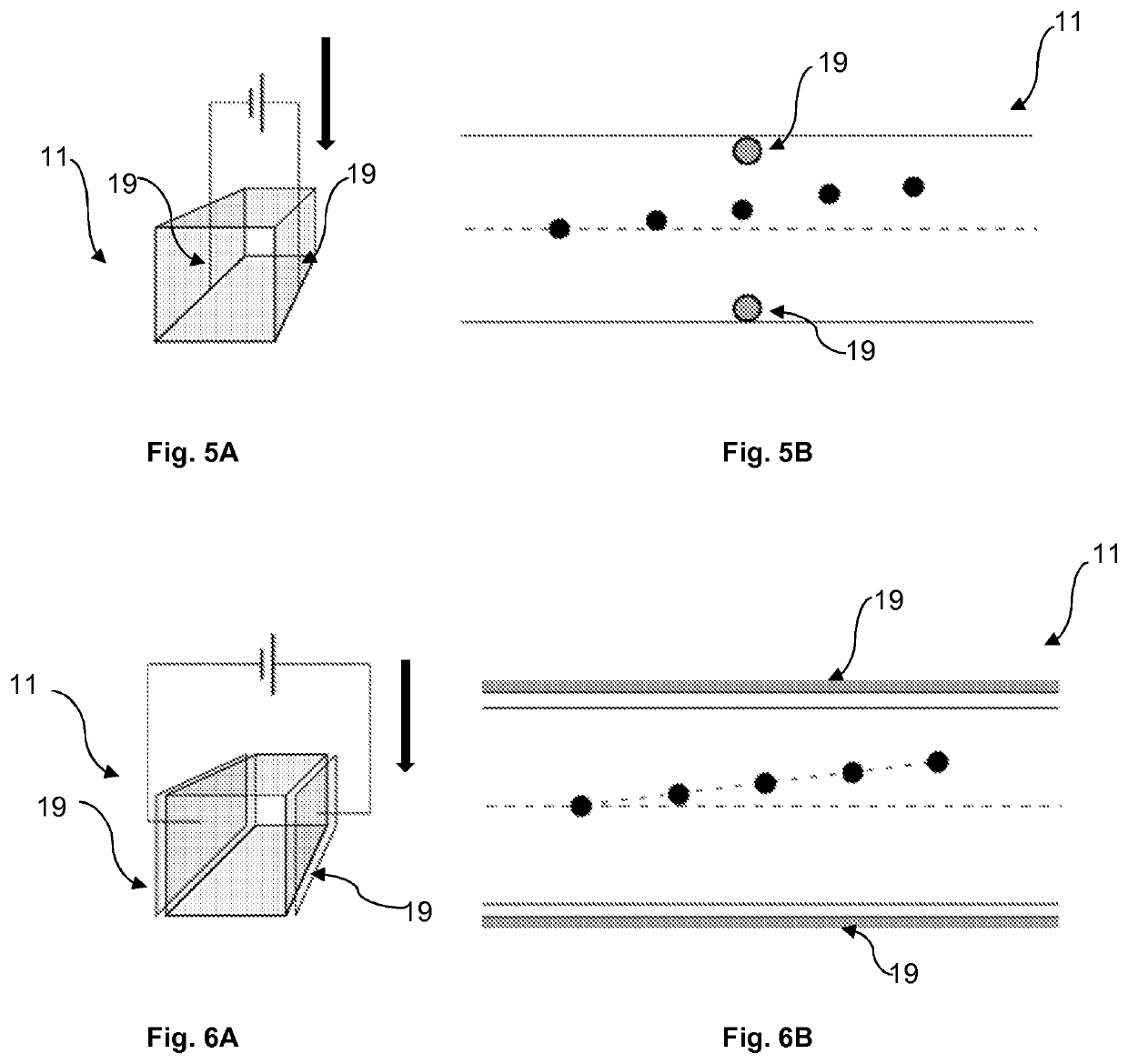Method for determining the electrophoretic mobility of emulsion droplets
- Summary
- Abstract
- Description
- Claims
- Application Information
AI Technical Summary
Benefits of technology
Problems solved by technology
Method used
Image
Examples
Embodiment Construction
[0117]The invention will now be described in more detail without limitation in the following description.
[0118]The present invention is most preferably implemented in the context of oil and gas applications. By “oil and gas applications” is meant any method of extracting hydrocarbons from a subterranean formation, or of transporting, processing or treating a hydrocarbon-containing stream or a by-product stream resulting from hydrocarbon extraction.
General Presentation of the Device and Method
[0119]The invention relates to a method for determining the electrophoretic velocity of a plurality of droplets of a first fluid in an emulsion formed by the first fluid, in a second fluid; as well as to a device for carrying out this method.
[0120]By “droplet” is meant an isolated portion of the first fluid that is surrounded by a second fluid, the first fluid being immiscible with the second fluid.
[0121]The first fluid may be an aqueous solution or oil. Preferably the first fluid is oil.
[0122]T...
PUM
| Property | Measurement | Unit |
|---|---|---|
| residence time | aaaaa | aaaaa |
| flow rate | aaaaa | aaaaa |
| flow rate | aaaaa | aaaaa |
Abstract
Description
Claims
Application Information
 Login to View More
Login to View More - R&D
- Intellectual Property
- Life Sciences
- Materials
- Tech Scout
- Unparalleled Data Quality
- Higher Quality Content
- 60% Fewer Hallucinations
Browse by: Latest US Patents, China's latest patents, Technical Efficacy Thesaurus, Application Domain, Technology Topic, Popular Technical Reports.
© 2025 PatSnap. All rights reserved.Legal|Privacy policy|Modern Slavery Act Transparency Statement|Sitemap|About US| Contact US: help@patsnap.com



